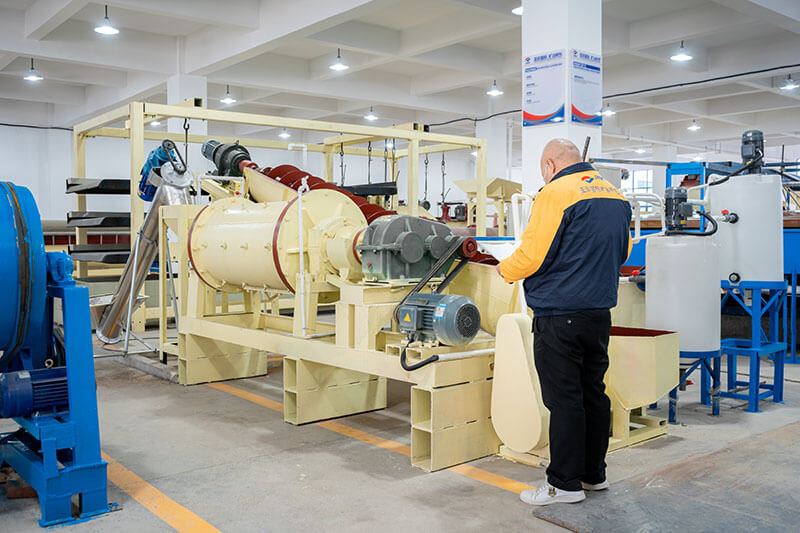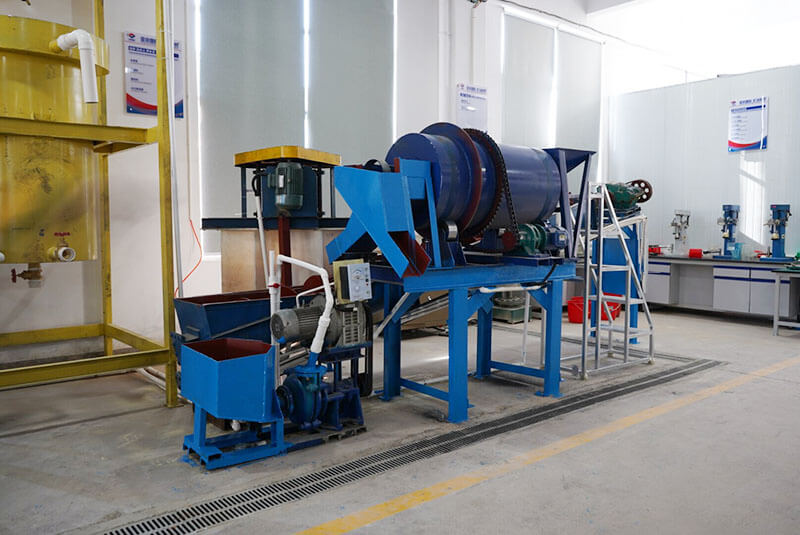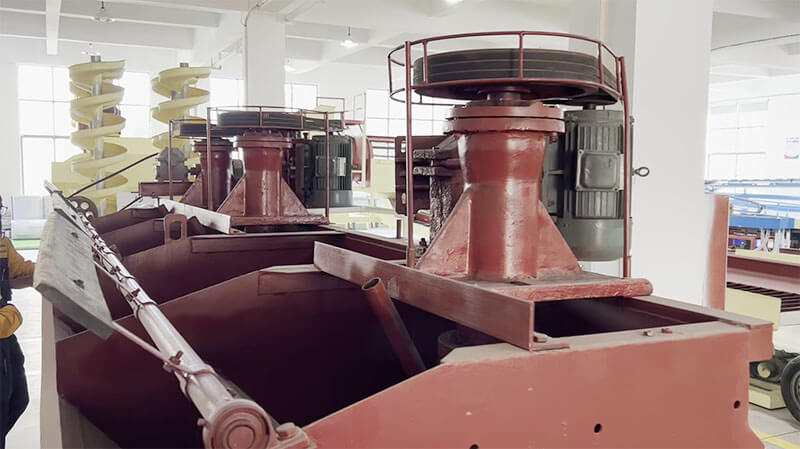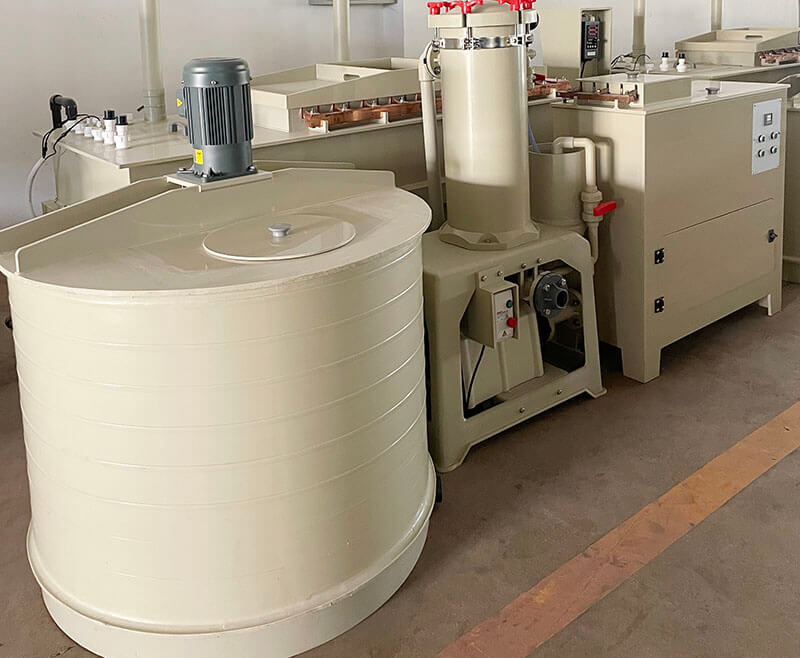Different mining equipment is suitable for processing various minerals and achieving different beneficiation effects. Through mineral processing experiments, it is possible to quickly confirm the process flow for large mining production lines and avoid detours. For mineral ore testing, it will need different laboratory equipment, such as laboratory crushing machines, laboratory grinding equipment, laboratory separating equipment, etc. So which equipment is suitable for rock tin-tantalum-niobium ore beneficial testing?
For crushing rock tin tantalum niobium to 0-2 mm size, it will need a laboratory jaw crusher, laboratory hammer crusher, lab shaking table, and laboratory three-disk magnetic separator.
Lab Tin-Tantalum-Niobium Ore Process Equipment
1. Laboratory Jaw Crusher
The laboratory jaw crusher is a lab tin-tantalum-niobium ore process equipment for the medium particle size crushing of various ores and bulk materials. It is suitable for crushing materials with a compressive strength of no more than 320Mpa and divides into two types: coarse crushing and fine crushing. The PE series jaw crusher has various capacity models for choices, with a feeding particle size of 125 mm~1200 mm, and is the primary crushing equipment. This equipment is for the coarse, medium, and fine-crushing treatment of various ores such as limestone, calcium carbide, calcium carbide slag, shale, basalt, river pebble, bluestone, etc.
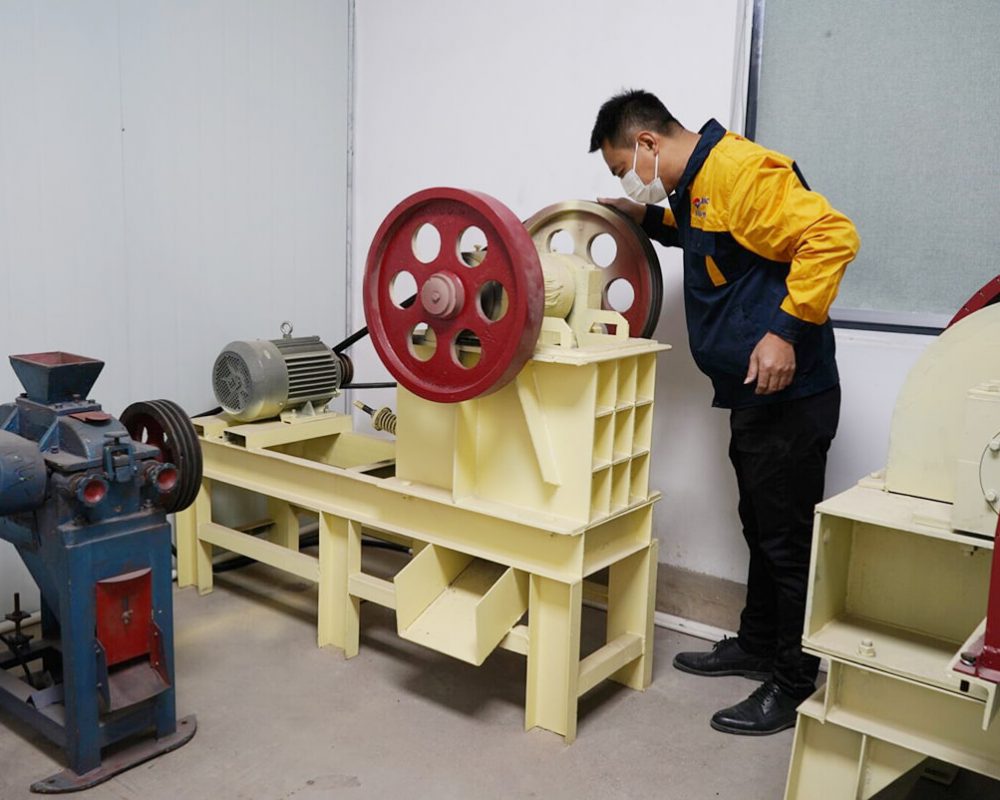
- Operation: The laboratory jaw crusher first crushes the rock ore to a size of 20-30 millimeters and adjusts the gap between the tooth plates to ensure that the particle size of the material is within 20-30mm.
- Features
- The crushing ratio is up to about 15, with uniform particle size.
- Spacer-type discharge port adjustment setting, with a wide adjustment range and reliable operation.
- High production efficiency, and low energy consumption, compared to the ordinary fine jaw crusher, the processing capacity increases by 20-35% compared to the same aircraft, and the energy consumption is reduced by 15-20%.
- The crushing chamber is deep and has no dead zone, improving the feeding capacity and output.
- The use of hyperbolic jaw plates reduces wear, and under the same process conditions, the lifetime of the jaw plates can extend to more than 3-4 times, especially for high abrasive materials.
- The lubrication system is safe and reliable, with convenient component replacement and a low maintenance workload.
2. Laboratory Hammer Crusher
Laboratory hammer crusher directly crushes materials with large particle sizes of 50-150 millimeters to 1, 3, 6, and 13 millimeters or less for laboratory sample preparation. The laboratory hammer crusher is a lab tin-tantalum-niobium ore process equipmentfor coarse, medium crushing, and fine crushing of raw materials, crushing materials like coal, limestone, pyrite, phosphate rock, coal gangue, etc. The crushing method is splitting crushing. The bulk size of the crushed material should be less than 10-60 millimeters, and the compressive strength of the material should be ≤ 800MPa. It has wide applications in the metallurgical, building materials, and mining industries.
- Operation: Use the hammer crusher for fine crushing, which is necessary to break them down to below 2mm and release the tantalum niobium concentrate as much as possible from the stones. Only then can the subsequent beneficiation equipment achieve better results.
- Performance characteristics:
- Simple structure, high crushing ratio, and high efficiency.
- Change the discharge particle size by adjusting the gap size of the castor bars.
- The hammerhead is wear-resistant and impact-resistant, making it easy to operate and maintain.
3. Laboratory Shaking Table
Lab shaking table is a lab tin-tantalum-niobium ore process equipment for laboratory research and testing of ore beneficiation, as well as for gravity beneficiation in small beneficiation plants. It divides into slime (LYN) and sand type (LYS). It is suitable for separating fine and fine rare metals, ferrous metals, non-ferrous metals, precious metals, and other minerals and coal. It is equipment for separating fine-grained ores and has wide applications for separating tin, tungsten, gold and silver, lead, zinc, tantalum, niobium, iron, manganese, titanium iron, and coal.
- Operation: The laboratory shaking table separates tantalum niobium tin concentrate and heavy minerals. The shaking table is equipment for mineral gravity separation, which separates heavy and light minerals with different specific gravity. Tantalum-niobium tin and other magnetic minerals are heavy minerals, and silicon dioxide is a light mineral, preliminarily enriching the mixed concentrate of heavy minerals.
- Characteristics
- High stiffness, strength, and small deformation.
- Low water absorption and no gaining weight.
- The working surface is not easily damaged, has good wear resistance, and requires less maintenance.
- No moisture absorption, swelling, mold, or insect infestation.
- Chemical resistant, acid and alkali-resistant, and does not avoid mineral slurry.
- Good weather resistance, stable shape, and non-cracking.
- Good sorting performance and stable indicators.
- Retained the assembly dimensions of the wooden bed surface, and the two are interchangeable for installation.
4. Laboratory Three-Disk Magnetic Separator
The lab three-disc magnetic separator is a lab tin-tantalum-niobium ore process equipment for separating weakly magnetic minerals and rare metal ores. There are two types of three-disk magnetic separators: dry three-disk magnetic separators suitable for separating various magnetic mineral mixtures. According to the magnetic differences of minerals, we can adjust the excitation current of each level of the disk to form a magnetic field of different intensities to achieve efficient separation of minerals. Adjust the induction distance between each disk and the processed particles to obtain different magnetic field induction intensities, achieving one-time separation of multiple minerals. This equipment has a wide application for dry separation of ilmenite, monazite, tungsten tin ore, tantalum iron ore, and other magnetic and non-magnetic minerals.
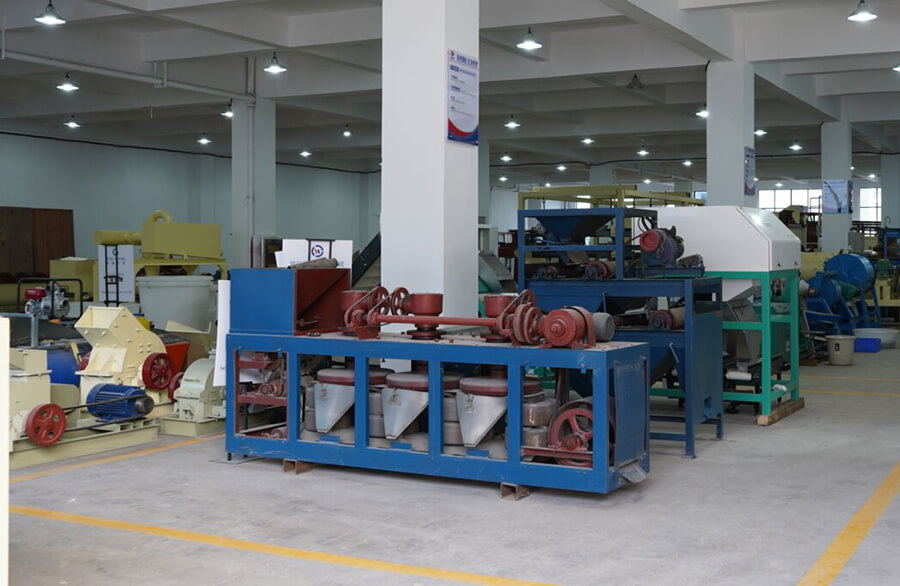
Operation: Now we have the concentrate from the shaking table, which enters the laboratory magnetic separator to remove magnetic minerals and obtain the concentrate.
- Product Features
This machine has a reasonable structure, simple operation, and easy maintenance. It can separate minerals disposable like strong magnetism, weak magnetism, and non-magnetism. It is also suitable for dry operations in water-scarce mining areas.
If there requires a particle size finer than 2mm, we will use different lab testing equipment for mineral processing according to actual requirements.
JXSC lab mineral processing equipment manufacturer provides various laboratory beneficiation equipment suitable for minerals such as gold, tin, tungsten, lead, zinc, tantalum, niobium, iron, manganese, silver, titanium iron, and coal, as well as laboratory jaw crusher, hammer crusher, roller crusher, grinding equipment, mineral separating equipment, screening, and washing equipment, etc. Welcome to consult if you are interested in our lab machines.

